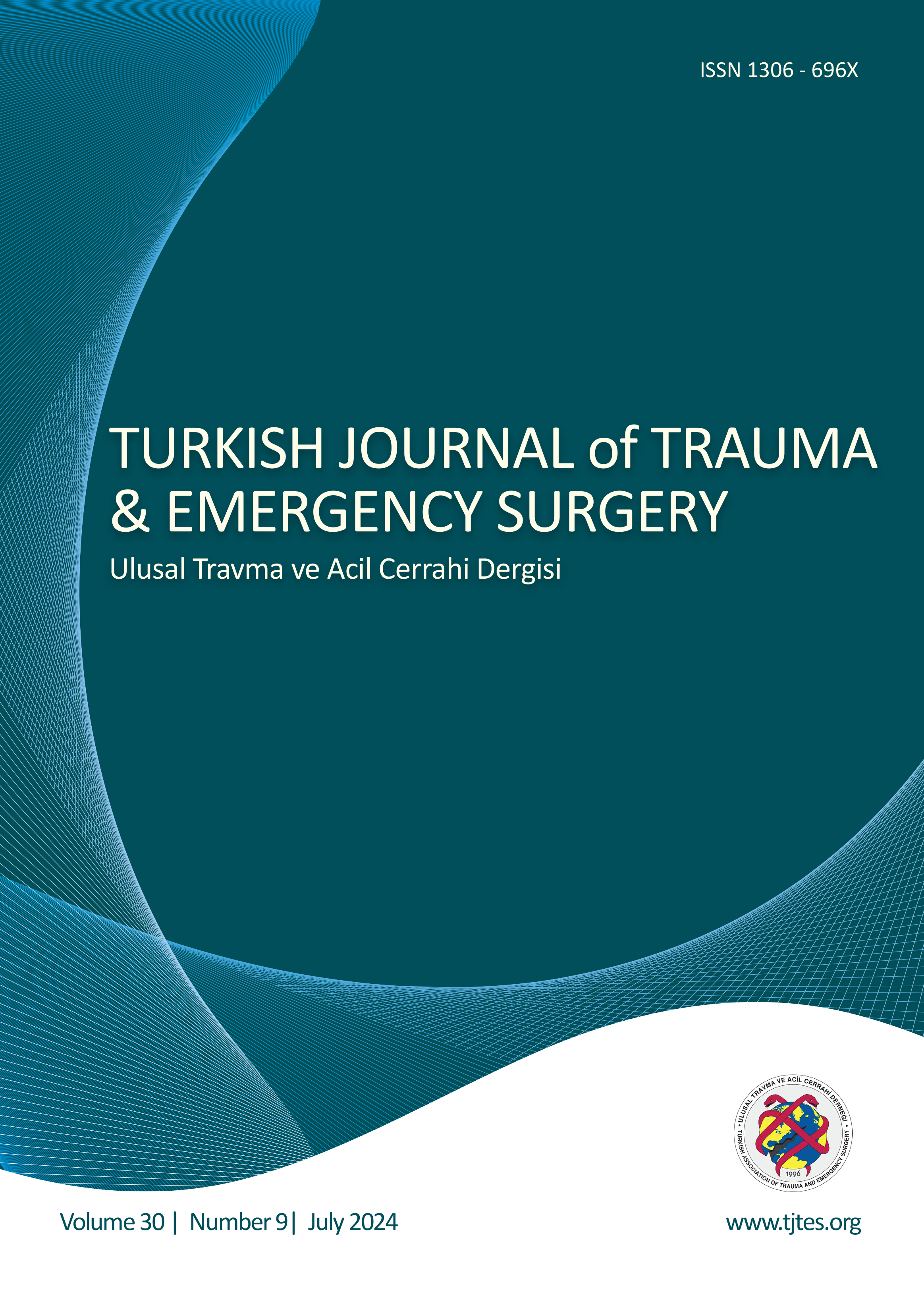Quick Search
Factors associated with thirty-day mortality and intensive care unit admission in patients undergoing hip fracture surgery
Elvan Tekir Yılmaz1, Yiğit Şahin2, Bilge Olgun Keleş1, Ali Altınbaş11Department of Anaesthesiology and Reanimation, Giresun University Faculty of Medicine, Giresun-Türkiye2Department of Anaesthesiology and Reanimation, Giresun University Training and Research Hospital, Giresun-Türkiye
BACKGROUND: Various factors contribute to the development of mortality and morbidity in hip fracture surgeries. This study aims to investigate the effects of modifiable factors such as the type of anesthesia, anesthesia management, surgical method, and timing of surgery on 30-day mortality rates, intensive care unit admissions, and complications.
METHODS: A total of 400 patients who underwent hip fracture surgery between January 2021 and December 2023 at a Training and Research Hospital were retrospectively analyzed. Patients were divided into two groups: those followed in the ward, named Group 1 (n=304), and those in the intensive care unit, named Group 2 (n=96). Recorded data included demographic characteristics, American Society of Anesthesiologists (ASA) physical status scores, types of comorbidities, anesthesia type, surgical method, surgical delay time, duration of surgery, blood transfusion requirements, and complications.
RESULTS: Patients in Group 2 had higher mean age, comorbidity, and mortality rates compared to Group 1 (p<0.001). In terms of types of comorbidities, the rate of intensive care unit admission was higher in patients with coronary artery disease and chronic renal failure (p<0.001). Mean surgical delay and length of hospital stay were also higher in Group 2 (p<0.001). In multivariate logistic regression analysis, age (p<0.001, Odds Ratio [OR]=1.91, Confidence Interval [CI]=1.046-1.137), ASA score (p<0.001, OR=3.872, CI=1.913-7.838), duration of surgical delay (p<0.001, OR=2.029, CI=1.365-3.017), surgical method (p=0.003, OR=2.003, C=1.258-3.188), and length of hospital stay (p=0.006, OR=1.147, CI=1.04-1.266) were determined as predictive factors for 30-day mortality.
CONCLUSION: This study found that age, ASA classification, length of hospital stay, surgical method, and surgical delay were predictive factors for both morbidity and mortality. Among these, surgical delay time appears to be a modifiable parameter when all factors are considered.
Keywords: Hip fractures, mortality; morbidity; postoperative complications; predictive factors.
Kalça kırığı ameliyatı geçiren hastalarda otuz günlük mortalite ve yoğun bakım ünitesine yatış ile ilişkili faktörler
Elvan Tekir Yılmaz1, Yiğit Şahin2, Bilge Olgun Keleş1, Ali Altınbaş11Giresun Üniversitesi Tıp Fakültesi, Anesteziyoloji ve Reanimasyon Anabilim Dalı, Giresun, Türkiye2Giresun Üniversitesi Eğitim Araştırma Hastanesi, Anesteziyoloji ve Reanimasyon Anabilim Dalı, Giresun, Türkiye
AMAÇ: Kalça kırığı ameliyatlarında mortalite ve morbidite gelişimine katkıda bulunan çeşitli faktörler vardır. Bu çalışmada anestezi tipi, anestezi yönetimi, cerrahi yöntem, ameliyatın zamanlaması gibi değiştirilebilir faktörlerin 30 günlük mortalite oranı, yoğun bakım ünitesine yatış ve komplikasyonlar üzerindeki etkisini araştırmayı amaçladık.
GEREÇ VE YÖNTEM: Bir Eğitim ve Araştırma Hastanesinde Ocak 2021 ile Aralık 2023 tarihleri arasında kalça kırığı nedeniyle ameliyat edilen toplam 400 hasta retrospektif olarak analiz edildi. Hastalar iki gruba ayrıldı: serviste takip edilenler Grup 1 (n=304) ve yoğun bakım ünitesinde takip edilenler Grup 2 (n=96) olarak adlandırıldı.
Demografik özellikler, Amerikan Anestezistler Derneği fiziksel durum skorları, komorbidite tipi, anestezi tipi, cerrahi yöntem, cerrahi gecikme süresi, cerrahi süre, kan transfüzyon gereksinimi ve komplikasyonlar kaydedildi.
BULGULAR: Grup 2'deki hastaların yaş ortalaması, komorbidite ve mortalite oranları Grup 1'e göre daha yüksekti (p<0.001). Komorbidite türleri açısından, koroner arter hastalığı ve kronik böbrek yetmezliği olan hastalarda yoğun bakım ünitesine yatış oranı daha yüksek bulundu (p<0.001). Ortalama cerrahi gecikme ve hastanede kalış süresi Grup 2'de daha yüksekti (p<0.001). Yapılan multivaryant lojistik regresyon analizinde; yaş (p<0.001, QR=1.91 Cl=1.046-1.137), ASA skoru (p<0.001 QR=3.872 Cl=1.913 - 7.838), cerrahi gecikme süresi (p<0.001, QR=2.029 Cl=1.365-3.017), cerrahi yöntem (p=0. 003, QR= 2.003 Cl=1.258-3.188) ve hastanede kalış süresi (p=0.006, QR=1.147 Cl: 1.04-1.266) 30 günlük mortalite için prediktif faktörler olarak belirlendi.
SONUÇ: Bu çalışmada yaş, ASA sınıflandırması, hastanede kalış süresi, cerrahi yöntem ve cerrahi gecikmenin hem morbidite hem de mortalite için prediktif faktörler olduğu bulunmuştur. Bunlar arasında cerrahi gecikme süresi, tüm faktörler göz önünde bulundurulduğunda değiştirilebilir bir parametre olarak görülmektedir.
Anahtar Kelimeler: Kalça kırıkları, mortalite; morbidite; postoperatif komplikasyonlar; prediktif faktörler
Manuscript Language: English




